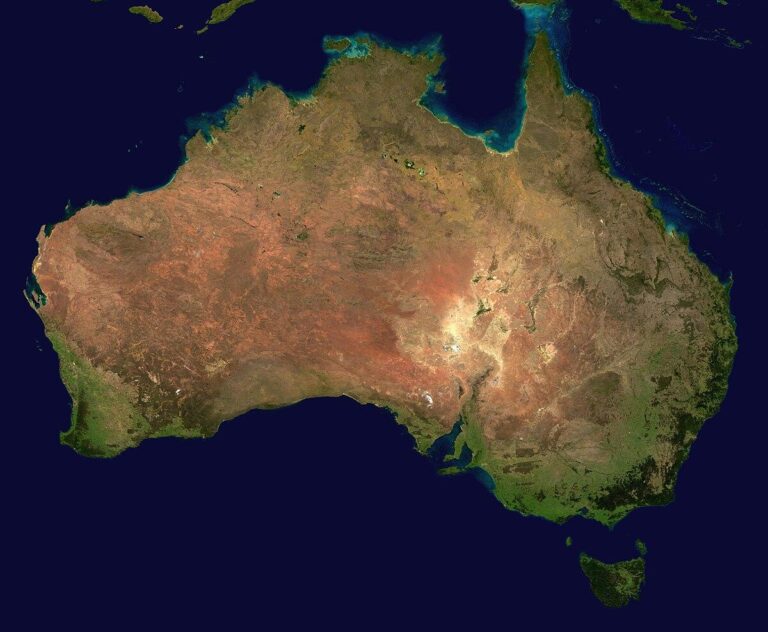Australia’s relationship with China, long a cornerstone of its economic growth, has entered a period of reckoning. After years of deepening trade ties and investment flows, recent political tensions and shifting global dynamics have left Canberra grappling with the fallout – a post-China hangover that is forcing policymakers and businesses alike to rethink strategies. This article examines how Australia is navigating the complex path from dependence to diversification amid an uncertain geopolitical landscape.
Australia Faces Economic Adjustment After China Trade Slowdown
Australia is confronting the ripple effects of a significant downturn in trade with its largest partner. The once-lucrative exports of iron ore, coal, and agricultural goods have seen a marked deceleration, forcing policymakers and businesses alike to reconsider the nation’s economic dependencies. This sudden shift has exposed vulnerabilities in Australia’s growth model, which has heavily relied on China’s voracious demand over the past two decades. The slowdown has triggered ripple impacts across labor markets, commodity prices, and investment flows, compelling the government to pivot towards diversification and resilience-building strategies.
Among the key challenges ahead are:
- Reduced export revenues affecting national income and budget forecasts
- Pressure on the Australian dollar influencing inflation and purchasing power
- Need for new trade partnerships to fill the void left by the reduced Chinese engagement
- Economic recalibration towards technology, services, and sustainable industries
| Sector | 2019 Export Value (AUD bn) | 2023 Export Value (AUD bn) | Change (%) |
|---|---|---|---|
| Iron Ore | 110 | 85 | -22.7% |
| Coal | 60 | 48 | -20.0% |
| Agriculture | 35 | 30 | -14.3% |
| Services | 25 | 28 | +12.0% |
Diversifying Trade Partners to Reduce Dependency Risks
In recent years, Australia’s economic dependence on a narrow set of trading partners, particularly China, has sparked concerns over vulnerability to geopolitical shifts and trade disruptions. To counteract these risks, policymakers and businesses are increasingly prioritizing the expansion of trade relationships across diverse markets. This strategic pivot not only spreads economic risk but also unlocks new opportunities for growth in emerging economies and established allies alike.
Key focus areas for diversification include:
- Strengthening ties with ASEAN countries through trade agreements and investment incentives
- Increasing exports to European markets, particularly in technology and agricultural sectors
- Exploring bilateral deals with India and the United States to balance influences
| Trade Partner | 2023 Export Share | Growth Potential | Key Exports |
|---|---|---|---|
| China | 32% | Low (saturated) | Iron ore, coal |
| India | 7% | High | Education services, minerals |
| Japan | 10% | Moderate | Education, machinery |
| ASEAN | 12% | High | Consumer goods, raw materials |
| EU | 9% | Moderate | Wine, education |
Policy Strategies to Boost Innovation and Strengthen Regional Ties
To invigorate innovation and fortify regional relationships, policymakers are increasingly prioritizing diversification and strategic collaboration. Emphasizing research and development funding in emerging technologies like clean energy, biotechnology, and digital infrastructure has become essential for reducing reliance on any single economic power. Governments are also streamlining regulatory frameworks to foster a startup-friendly environment that attracts both local talent and foreign investment. Furthermore, initiatives aimed at enhancing education and vocational training seek to build a workforce capable of meeting future industry demands, thereby securing Australia’s competitive edge in a rapidly evolving global market.
At the diplomatic level, enhancing ties with neighbouring countries through targeted trade partnerships and joint innovation hubs is gaining momentum. These efforts are supported by multipronged strategies such as:
- Establishing bilateral tech exchange programs
- Creating regional innovation clusters
- Building infrastructural connectivity to streamline supply chains
- Fostering public-private partnerships to align commercial and strategic goals
Such measures not only diversify Australia’s economic partnerships but also embed resilience into regional supply networks, making them less vulnerable to external shocks.
| Policy Focus | Key Benefits |
|---|---|
| Innovation Grants | Accelerate tech development and commercialization |
| Trade Diversification | Reduce economic dependency on major markets |
| Regional R&D Hubs | Boost knowledge-sharing and cross-border collaboration |
| Skills Development | Prepare workforce for future industry needs |
To Wrap It Up
As Australia navigates the complex aftermath of its fraught relationship with China, the path forward remains uncertain. The country’s efforts to diversify trade partnerships and reassess economic dependencies underscore a broader recalibration in the Indo-Pacific region. While the post-China hangover poses significant challenges, it also presents an opportunity for Canberra to forge a more resilient and balanced foreign policy-one that balances economic pragmatism with strategic autonomy. How Australia manages this pivotal transition will not only shape its own economic future but also influence the broader geopolitical landscape in the years to come.




